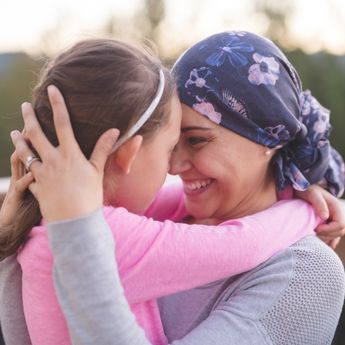Adapted from an article originally posted in CBCN’s Network News
If you are at high risk for developing breast cancer because of family history or because you have the BRCA1 or BRCA2 gene mutation, you have several preventative treatments to consider. These options include close surveillance, chemoprevention, and prophylactic mastectomy, with or without breast reconstruction.
Close surveillance
Close surveillance, or screening for cancer, routinely uses tests to try to catch cancer in its early stages, when it is most treatable. Surveillance doesn’t prevent cancer. However, early detection improves a person’s chance of surviving their cancer.
Chemoprevention
Chemoprevention is the use of medication to lower the risk or prevent cancer in healthy people. Some chemoprevention medications reduce breast cancer risk. However, just how well these drugs perform in high-risk women depends on each woman’s individual level of risk. Many past studies of these medications focused on women in the general population or women whose risk for breast cancer was based on the Gail Model, a risk assessment tool; therefore, the research may not apply to everyone with hereditary cancer risk. When choosing the best risk management option for yourself, you need a clear sense of your risk (a health care team with expertise in managing high-risk patients can help you identify this) and an understanding of the potential benefits and side effects of chemopreventive medications.
One common chemoprevention drug is tamoxifen. A large study found that women who took tamoxifen for five years lowered their breast cancer risk by one half.1 This study identified women at high risk for breast cancer according to the Gail Model. The Gail Model does not take into account certain aspects of hereditary breast and ovarian cancer; therefore, the high-risk population from this study may be different than women who are at high risk for breast cancer because of a BRCA mutation. Smaller studies looking at tamoxifen for breast cancer prevention in women with BRCA mutations have been inconclusive.
Tamoxifen may have some side effects and risks. Women who take this medication are at a slightly higher risk for developing uterine cancer. Tamoxifen can also increase the risk of blood clots, including serious blood clots, particularly in women who smoke or have other risk factors. Experts do not all agree that tamoxifen is appropriate for preventing breast cancer in women with BRCA1 mutations. Women who consider tamoxifen to lower their risk for breast cancer should discuss the benefits, risks and limitations with their health care team, including experts in managing high-risk women.
Prophylactic Mastectomy
Prophylactic mastectomy refers to the removal of healthy breasts to reduce a woman’s risk of developing breast cancer. Bilateral prophylactic mastectomy is the most effective means of reducing a woman’s risk; however, the benefits of such surgery depend on each woman’s individual risk. Because even the most experienced breast surgeon cannot remove all breast tissue, a small risk of developing breast cancer remains after prophylactic mastectomy. Although effective, some consider prophylactic mastectomy to be a drastic way to lower cancer risk. A woman’s decision to remove her healthy breasts is highly personal. Confronting your personal cancer risk can be confusing and frustrating. If you are a high-risk woman trying to choose the best risk-management option, you need as clear a sense of your personal risk as possible and an understanding of the potential benefits, risks, and side effects of prophylactic surgery. Therefore, it is important to consult with a specialist in cancer genetics when determining your risk for breast cancer and making risk management decisions that are best for you. Stay in contact with a genetics expert for updates on current knowledge.
Breast Reconstruction following a Prophylactic Mastectomy
Breast reconstruction is surgery to recreate breasts after mastectomy. Reconstructive procedures have evolved tremendously in the last decade. In past years, reconstructive surgeons tried to restore a woman’s profile in clothes. Now the goal of many surgeons is to make a woman look as natural as possible whether clothed or not. Reconstruction can replace the look of breasts, but even the best surgeons and the newest techniques can’t replace all sensation lost when chest nerves are severed during mastectomy, completely eliminate breast scars, or restore the ability to breastfeed.
Today, although some women prefer not to have reconstruction, those who do have many options. Choosing a method of reconstruction is very personal. Each procedure has advantages and disadvantages. Not all surgeons perform all procedures, and often, surgeons recommend only the techniques they perform. The most important actions a woman considering reconstruction can take is to learn about her options, decide which is best for her, then consult with and choose a surgeon who is experienced and expert in the technique she prefers. For more information on breast reconstruction, visit SurgeryGuide.
References
1. Fisher, B. et al. (1998). Tamoxifen for Prevention of Breast Cancer: Report of the National Surgical Adjuvant Breast and Bowel Project P-1 Study. Journal of the National Cancer Institute, Volume 90, Issue 18, pp. 1371-1388.
Photo by Andrea Piacquadio from Pexels







